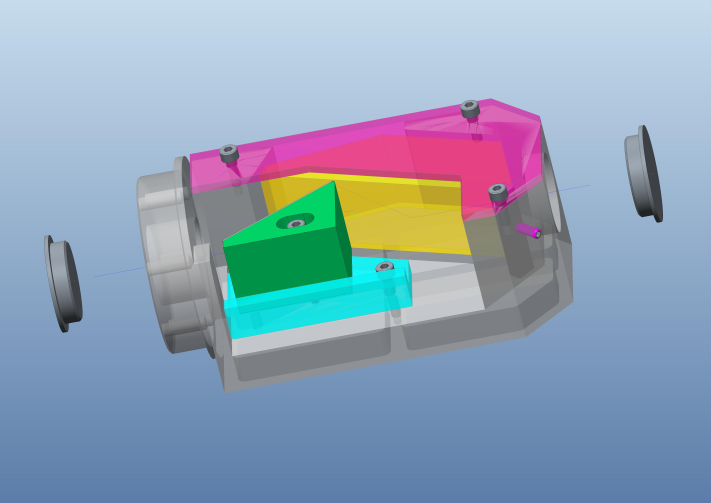Institute for Electronic Structure Dynamics
Infrared Mueller-matrix Ellipsometer
It is planned to equip the infrared beamline IRIS with a Mueller-matrix ellipsometer (MME). The ellipsometer will enhance the portfolio of analytical methods at the Helmholtz-Zentrum Berlin (HZB) for the development and evaluation of material systems important to solar cells and solar fuels, to thermoelectric applications and to energy-efficient information technologies such as spintronics.
The ellipsometer will take advantage of the diffraction limited source properties of synchrotron radiation. A highly collimated beam and a small analytical spot size spanning from the far- to the mid-infrared wavelength regions will be utilized to investigate the above mentioned material systems.
The MME at IRIS will use a retarder which is a rotating phase shifting element. In order to obtain a maximum in performance and transmission our design yields a large acceptance aperture by maintaining the optical axis while rotating. In addition, a short beam path inside the highly refractive material having only two surfaces to pass through ensures the minimal losses. For high quality measurements, the retardation of 132° has been chosen following the considerations of a MME breadboard instrument1 used at the SOLEIL Synchrotron. The entire spectral range will be covered with two retarders, a silicon retarder for the far-infrared and a KRS-5 retarder for the mid-infrared range.
References:
- Garcia-Caurel, E. et al., Mid-infrared Mueller ellipsometer with pseudo-achromatic optical elements. Applied Optics 54, 2776 (2015).
- U. Schade, E. Ritter, L. Puskar, E.F. Aziz, F. Borondics and E. Garcia-Caurel, IR Retarders for a Mueller-matrix Ellipsometer at the IRIS Beamline, WIRMS 2017, Oxford.

